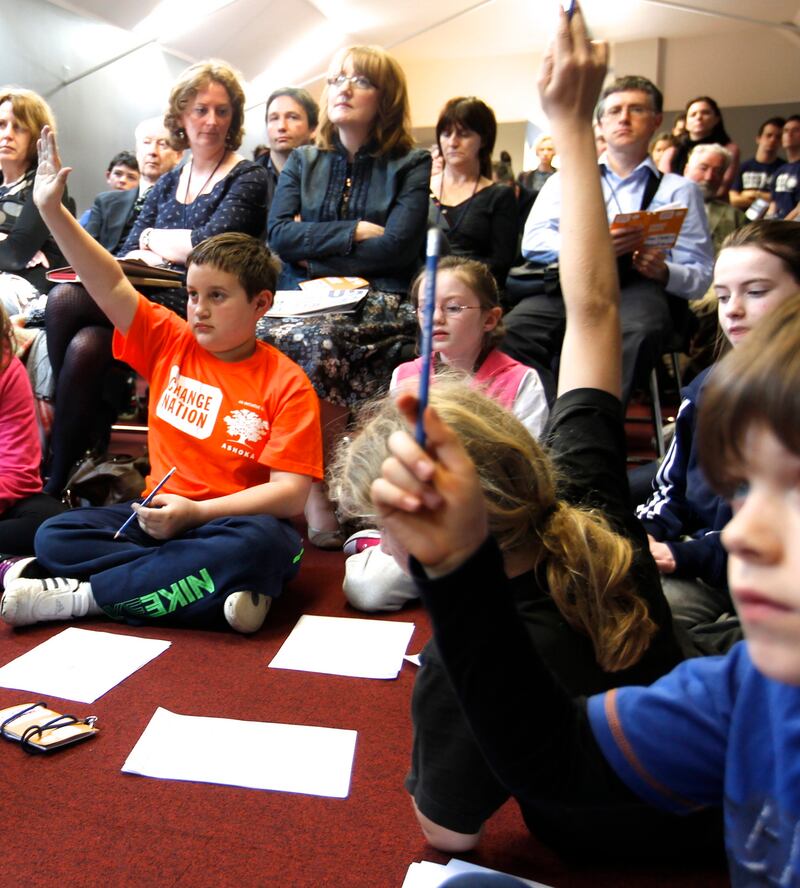‘When I sat down with John Mighton at last year’s Change Nation event and heard about Jump Maths, I was blown away,” says Ciaran Cannon, Minister of State at the Department of Education and Skills. Cannon says he expected to hear about social innovation in an abstract way – he did not foresee the level of creativity, action and hard evidence for change he encountered at an Ashoka event at Dublin Castle.
Jump Maths made the biggest impression as the Minister could see straight away how the practical teaching methodology could help Irish primary-school children and teachers. “John Mighton, who developed the initiative in Canada, was able to provide hard, verifiable evidence that this method works. Analysis of the programme showed that children taught using the Jump Maths methodology moved from the middle percentile in terms of mathematical understanding to the top 15 per cent – across the board, regardless of their level at the start.
John believes that everyone has a basic competence at maths and can be brought to a minimum level if they are taught in the right way.”

Jump Maths is not a new curriculum. Mighton’s programme helps teachers to deliver mathematical concepts in a way that ensures no child skips a step. According to Jump Maths co-ordinator for Ireland Pamela Fitzgerald, “Learning maths is a scaffolded exercise. Each step builds upon the one before. The problem for many children is that they miss a step here and there and don’t manage to grasp some concepts along the way. The result is that they never really catch up as subsequent concepts rely on an understanding of these earlier steps.”
These gaps become apparent at post-primary level, says Fitzgerald. “Look at the numbers of students taking higher level maths and foundation level, and then compare it to subjects such as English. There is a much wider performance gap between pupils in this subject than in any other. It doesn’t have to be this way.”
In 2012, just 22 per cent of students took higher-level maths, compared to 37 per cent in Irish and 65 per cent in English.
The problem, says Fitzgerald, begins at primary level. "Many children get left behind during the primary cycle. If a child misses a step they can fall behind very quickly and never catch up. Jump Maths is about making sure everyone has the best chance of keeping up."
Irish context
Jump Maths supports teachers in delivering maths concepts in incremental steps that should only be completed when every child has a full grasp. According to Mighton, and borne out by studies in Canada and the UK, every child can move with the programme. It has also been positively received by teachers who do not have a background in maths and who struggle to deliver primary curricula. It has been running in Canada for nearly 10 years and is now being taught to about 86,000 students annually.
Cannon says while Jump Maths does not require any curriculum change, it chimes with the objectives of the Project Maths curriculum at post-primary level, and to that end he has committed to testing the programme for suitability in an Irish context.
In September, 24 primary schools in Galway and the midlands will employ the Jump Maths methodology and the results will be monitored and analysed by the Marino Institute of Education, in Dublin.
“We want to see does Jump Maths have the same effect in Irish schools as it has had in Britain and in Canada, where it has already been researched,” he says. “Sean Delaney from the Marino Institute, one of the foremost authorities on maths teaching in the country, is overseeing the research and is very excited about its potential. At the end of the programme we will see if there are elements that we can incorporate into Irish teaching practices.
“It’s not about changing the curriculum, but delivering it in such a way that every child achieves competence, not just the ‘gifted’ cohort. If we can embed a higher level of understanding at that early age the children will carry it with them right through their education and beyond.”










